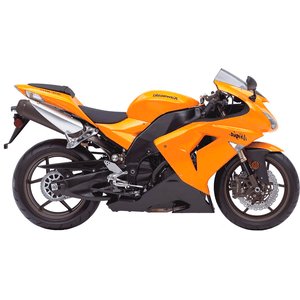Kawasaki Ninja ZX-10R (2006–2007): A Track-Focused Legend Revisited
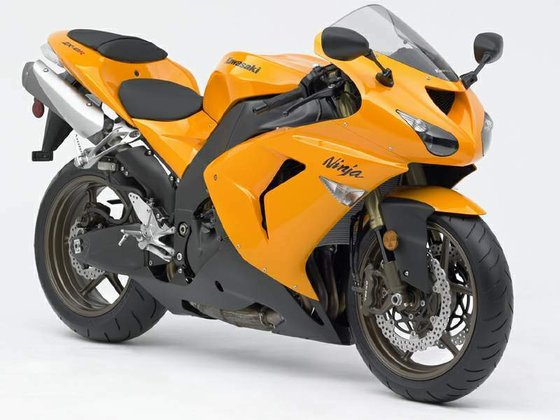
Introduction
The mid-2000s were a golden era for liter-class sportbikes, and the Kawasaki Ninja ZX-10R (2006–2007) stands as a monument to raw, unapologetic performance. Fresh off back-to-back "Best Superbike" awards from Cycle World in 2004 and 2005, Kawasaki refused to rest on its laurels. Instead, they doubled down, refining the ZX-10R into a machine that blurred the line between street legality and track readiness. Riding this bike isn’t just an experience—it’s a masterclass in how engineering obsession translates to adrenaline.
While modern riders might associate the ZX-10R with today’s rider aids and electronic nannies, the 2006–2007 model is a reminder of a purer era. This generation ditched compromises in favor of a singular focus: dominating racetracks. Let’s dissect why this Ninja remains a benchmark for analog superbikes.
Riding Experience: Brutal Efficiency Meets Precision
The Thrill of Unfiltered Power
Swing a leg over the ZX-10R, and its intent is immediate. The seat height (825 mm / 32.5 in) positions you in a committed, forward-leaning stance, elbows bent, knees gripping the sculpted tank. Thumb the starter, and the 998cc inline-four awakens with a metallic snarl, settling into a gruff idle at 1,100 rpm.
Crack the throttle, and the engine’s personality reveals itself: linear, urgent, and unrelenting. With 175 hp (129 kW) peaking at 11,700 rpm and 115 Nm (84.6 lb-ft) of torque, acceleration isn’t just brisk—it’s violent. The mid-range punch, thanks to revised fuel injection and a heavier flywheel, pulls hard from 7,000 rpm, but the real magic happens above 10,000 rpm. The tachometer needle races toward the 13,000 rpm redline, accompanied by a rising howl from the dual under-seat exhausts.
Handling: A Scalpel on Wheels
Kawasaki’s chassis revisions transformed the ZX-10R from a wild stallion to a precision instrument. The aluminum twin-spar frame, paired with a longer swingarm and Öhlins steering damper, delivers razor-sharp turn-in without the nervousness of its predecessor. On twisty backroads or track straights, the bike feels planted, leveraging its short wheelbase (1,389 mm / 54.7 in) for agility.
The fully adjustable 43mm inverted fork and Uni-Trak rear suspension (125 mm travel) strike a rare balance—compliant enough for bumpy tarmac yet stiff enough to handle hard cornering. Dive into a hairpin, and the radial-mounted Nissin calipers bite twin 300mm petal discs with surgical precision. Trail braking? The front end communicates every nuance of grip, inspiring confidence even when scraping knee sliders.
The Daily Grind? Not Quite.
Let’s be clear: this isn’t a commuter bike. The riding posture is aggressive, the seat firm, and the mirrors purely decorative at speed. Yet, for weekend canyon blasts or track days, the ZX-10R’s focused ergonomics—recessed tank, clip-on bars, and rearset pegs—feel like a second skin.
Design & Aerodynamics: Form Follows Fury
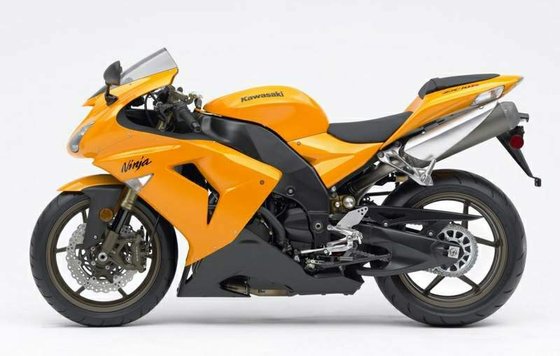
Kawasaki’s design team prioritized function, but the result is undeniably striking. The dual exhausts, tucked under the seat, minimize drag while paying homage to MotoGP aesthetics. The fairing’s sharp lines and central ram-air duct aren’t just for show—they channel airflow to the high-pressure airbox, boosting horsepower as speeds climb.
The concave fuel tank deserves special mention. It allows riders to tuck in seamlessly, reducing wind resistance at triple-digit speeds (290+ km/h / 180+ mph). Even the three-piece front fender and "passion red" or "lime green" color schemes scream intent. This is a bike that looks fast standing still.
Performance Breakdown: Engineering Overkill
Engine & Transmission
- The Heartbeat: The 998cc inline-four uses forged pistons, lightweight titanium valves, and a slipper clutch to handle brutal acceleration and hard downshifts. The DFI fuel injection (43mm throttle bodies) delivers crisp throttle response, while the butterfly valve in the titanium exhaust optimizes backpressure.
- Gearbox: The 6-speed transmission, with barrel-ground splines, shifts with a satisfying snick. Clutchless upshifts are butter-smooth, and the back-torque limiter prevents rear-wheel hop during aggressive braking.
Chassis & Brakes
- Frame: The aluminum twin-spar frame’s revised motor mounts centralize mass, improving corner exit stability.
- Brakes: Radial-mounted Nissin calipers and petal discs offer fade-resistant stopping power, even after repeated laps.
Weight & Efficiency
At 170 kg (374 lbs) dry, the ZX-10R’s power-to-weight ratio humiliates heavier contemporaries. Fuel economy? A claimed 16.1 km/L (37.9 mpg), but expect single digits when riding hard.
Competition: How Does the ZX-10R Stack Up?

The mid-2000s liter-bike wars were fierce. Here’s how the Ninja fared against its rivals:
1. Suzuki GSX-R1000 (2005–2006)
- Pros: Softer power delivery, more street-friendly ergonomics.
- Cons: Heavier (179 kg / 395 lbs), less track-focused.
- Verdict: The GSX-R was the "everyday" superbike, but the ZX-10R dominated on track.
2. Yamaha YZF-R1 (2006–2007)
- Pros: Innovative crossplane crankshaft (from 2009), sublime exhaust note.
- Cons: Pre-2009 models lacked low-end torque.
- Verdict: The R1 excelled in refinement, but the Kawasaki’s raw power and agility gave it the edge.
3. Honda CBR1000RR (2006–2007)
- Pros: Smooth, predictable handling.
- Cons: Underpowered (156 hp) compared to the ZX-10R.
- Verdict: Honda’s "safe" choice couldn’t match the Ninja’s ferocity.
Maintenance: Keeping the Beast Alive
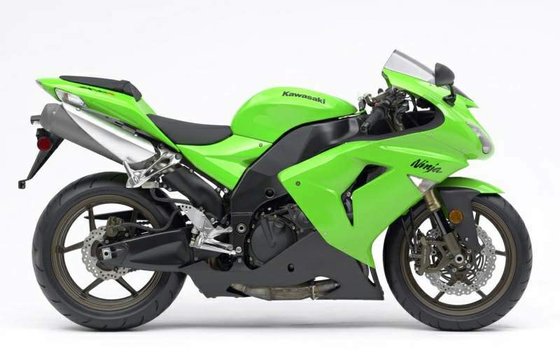
Owning a ZX-10R requires diligence, but MOTOPARTS.store has you covered:
Key Service Intervals
- Valve Clearance: Check every 26,000 km (16,000 mi). Intake: 0.15–0.24 mm, exhaust: 0.17–0.22 mm (cold).
- Oil Changes: Use synthetic 10W-40 (3.7L with filter). Swap every 5,000 km (3,100 mi).
- Coolant: Replace every 2 years (2.5L of ethylene glycol).
- Chain: Clean and lubricate every 500 km. The 108-link chain pairs with 17/40 sprockets—upgrade to DID or RK for longevity.
Common Upgrades
- Exhaust: Swap the stock titanium system for an Akrapović slip-on (à la MotoGP Replica) for weight savings and a throatier growl.
- Brakes: Replace pads with sintered compounds for track use.
- Suspension: Fine-tune preload and damping with aftermarket kits for your weight and riding style.
Troubleshooting Tips
- Cold Starts: If the engine hesitates, check the spark plugs (NGK CR9EIA-9, gap 0.9 mm).
- Steering Wobble: Ensure the Öhlins damper is adjusted (18 clicks) and tire pressures are correct (2.5 bar front / 2.9 bar rear).
Conclusion: A Timeless Track Weapon
The 2006–2007 Kawasaki Ninja ZX-10R isn’t just a motorcycle—it’s a statement. It rewards skilled riders with telepathic handling and brute-force acceleration while punishing complacency. Decades later, it remains a favorite among track-day enthusiasts and collectors alike.
Whether you’re chasing apexes or nostalgic thrills, this Ninja deserves respect—and a spot in your garage. And when it’s time to replace those worn-out pads or upgrade the exhaust, MOTOPARTS.store has the gear to keep your legend roaring.
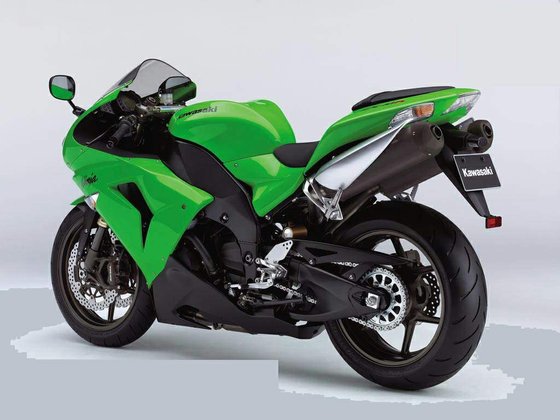

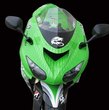



Specifications sheet
| Engine | |
|---|---|
| Stroke: | Four-stroke |
| Ignition: | TCBI with digital advance |
| Max power: | 128 kW | 172.0 hp |
| Max torque: | 115 Nm |
| Fuel system: | Digital fuel injection with 43mm throttle bodies |
| Lubrication: | Wet sump |
| Max power @: | 11700 rpm |
| Displacement: | 998 ccm |
| Max torque @: | 9500 rpm |
| Bore x stroke: | 76 x 55 mm |
| Configuration: | Inline |
| Cooling system: | Liquid |
| Compression ratio: | 12.7:1 |
| Number of cylinders: | 4 |
| Dimensions | |
|---|---|
| Wheelbase: | 1389 mm (54.7 in) |
| Dry weight: | 170 |
| Seat height: | 826 mm (32.5 in) |
| Overall width: | 705 mm (27.8 in) |
| Overall height: | 1130 mm (44.5 in) |
| Overall length: | 2065 mm (81.3 in) |
| Ground clearance: | 120 mm (4.7 in) |
| Fuel tank capacity: | 17 L (4.5 US gal) |
| Drivetrain | |
|---|---|
| Final drive: | chain |
| Chain length: | 108 |
| Transmission: | 6-speed |
| Rear sprocket: | 40 |
| Front sprocket: | 17 |
| Maintenance | |
|---|---|
| Rear tire: | 190/50-z-17 |
| Engine oil: | 10W40 |
| Front tire: | 120/70-z-17 |
| Idle speed: | 1100 ± 100 rpm |
| Brake fluid: | DOT 4 |
| Spark plugs: | NGK CR9EIA-9 |
| Spark plug gap: | 0.9 |
| Coolant capacity: | 2.5 |
| Forks oil capacity: | 0.96 |
| Engine oil capacity: | 3.7 |
| Valve clearance (intake, cold): | 0.10–0.20 mm |
| Valve clearance check interval: | 24,000 km (15,000 mi) |
| Valve clearance (exhaust, cold): | 0.20–0.30 mm |
| Recommended tire pressure (rear): | 2.9 bar (42 psi) |
| Recommended tire pressure (front): | 2.5 bar (36 psi) |
| Additional Features | |
|---|---|
| Exhaust: | Dual titanium mufflers with butterfly valve |
| Instrumentation: | Multifunction digital display with lap timer |
| Steering damper: | Öhlins adjustable |
| Weight distribution: | Centralized mass for improved handling |
| Chassis and Suspension | |
|---|---|
| Rake: | 24° |
| Frame: | Aluminum twin-spar backbone |
| Trail: | 102 mm (4.0 in) |
| Rear brakes: | 1 x 220 mm disc, 1-piston caliper |
| Front brakes: | 2 x 300 mm discs, 4-piston radial calipers |
| Rear suspension: | Uni-Trak linkage monoshock, fully adjustable (preload, compression, rebound) |
| Front suspension: | 43mm inverted cartridge fork, fully adjustable (preload, compression, rebound) |
| Rear wheel travel: | 125 mm (4.9 in) |
| Front wheel travel: | 119 mm (4.7 in) |



